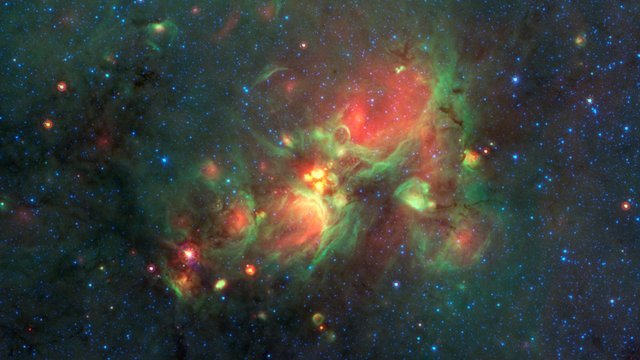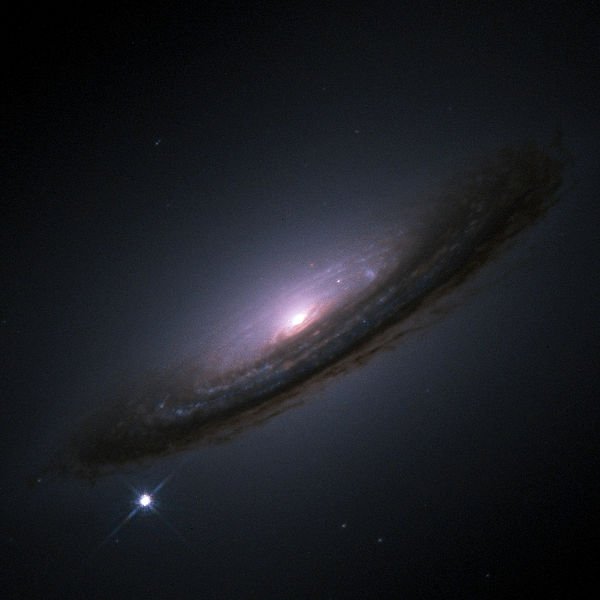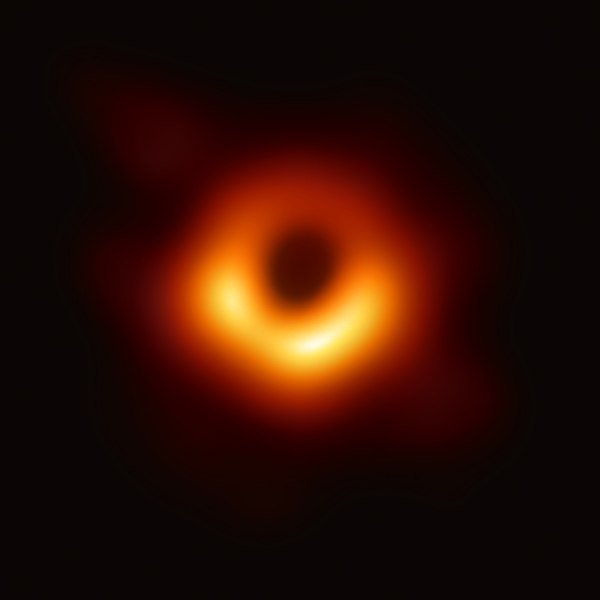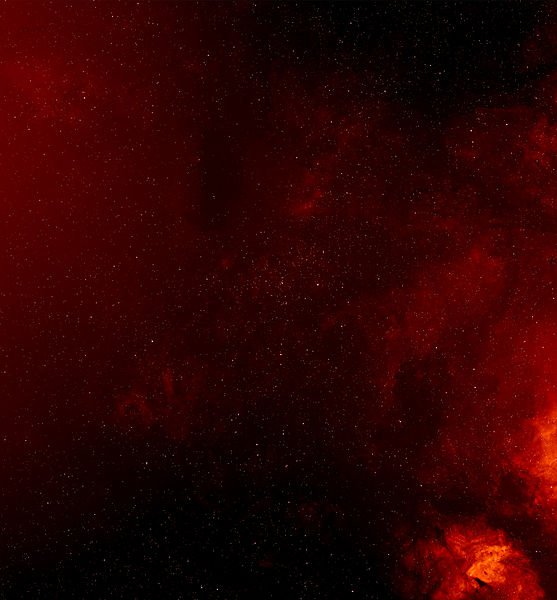ASTROPHYSICS: The fate of very massive stars.
Like I promised in the concluding part of my post on ASTROPHYSICS: the life and death of stars, that I'll be closing this explosive series on astrophysics by discussing on the fate of very massive stars, more massive than the Sun. I promised to also give an exposition on pulsars and black holes.

Pixabay
.......So, tighten your seat belt, and let's go on a ride.
THE FATE OF VERY MASSIVE STARS
Stars with masses greater than about 8 solar masses develop central cores hot enough to trigger carbon burning in a steady non-explosive way. Nuclear fusion reactions gradually make successively larger nuclei until the central core is made entirely of iron nuclei – the largest nucleus which can be made with net release of energy. Outside this iron-building core are layers of gradually decreasing temperature in which other reactions take place, each producing as heavy a nucleus as it can for the ambient temperature.
Eventually, iron-building stops and, as we have seen before, the core stops producing energy and begins to contract under its own huge gravitational forces. The inner core gets hotter and hotter until at a temperature of 5 billion kelvin (5 × 109 K) the laws of physics produce the unexpected.
The outer layers of the star, and even the core itself, are partly supported by the radiation pressure of the photons in hot plasma. At a temperature over 5 billion kelvin, the photons have enough energy to break down the iron nuclei into helium nuclei. But in doing this, the photons lose a great deal of energy, so their radiation pressure suddenly drops and there is a rapid gravitational collapse.
The outer layers fall catastrophically onto the core, which is still mostly iron. The core, originally about the size of the Earth, is compressed to a small sphere with a radius of just 50 km. This produces a concentration of matter which is denser than an atomic nucleus, a density at which electrons and the helium protons are forced together to become neutrons and neutrinos.
Meanwhile, the much greater mass of stellar material round the small core is collapsing inwards while undergoing different kinds of nuclear fusion. The temperature of this mass increases tremendously as its potential energy is lost, making the rate of the nuclear reactions increase explosively. The exploding matter falls onto the neutron core, bounces off it and creates a shock wave which blows all the outer material into space at very high speed.
What we observe is another supernova explosion, called a type II supernova. This leaves behind the hot superdense core, a neutron star, which has a very strong magnetic field.
PULSARS
A pulsar is a rotating neutron star that emits short bursts (pulses) of radiation at radio wavelengths and at very regular intervals.

Cambridge University Lucky Imaging Group • CC-BY-SA-3.0
The first pulsar was discovered in 1967 by 22-year-old research student Jocelyn Bell (now Burnell) and Professor Anthony Hewish whose team worked at the Mullard Radio Astronomy Observatory in Cambridge, England.
Jocelyn Bell noticed that one of the many radio sources detected by a very simple radio telescope produced sharp pulses at a very steady rate of just under one a second. The team wondered whether this could be a signal from some kind of extra-terrestrial civilisation. But more observations revealed similar signals from different parts of the sky. It was clear that this was a new type of astronomical object- a pulsating radio star or pulsar. Professor Hewish was awarded the Nobel Prize for the discovery in 1974.
The nature of pulsars was worked out by Thomas Gold (Austria and USA). In 1968 he suggested that they were in fact rotating neutron stars. A neutron star, with its strong magnetic field, has condensed from a much larger star which was rotating. So it will still have much the same angular momentum and, being very small, it should rotate very rapidly. A rotating magnetic field will emit radio waves continually, and it will do so along the line defined by the strongest concentration of lines of force.
As the neutron star rotates, its radio signal is detected by a radio telescope on Earth every time the magnetic poles face Earth. This is the lighthouse model of pulsars: the radio signal is seen at intervals, just as we see a flash when the rotating shield moves away from the light in a lighthouse.
The signal from the Crab pulsar reaches Earth every 0.033 s, which means it rotates 30 times a second. It emits radiation at all wavelengths from radio to X-radiation, and its total pulse radiation loss is 1028 W. This is 100 times the total radiation emitted by the Sun. Earth also receives non-pulsed radiation from it, and its total luminosity, of 1031 W, is 10 000 times greater than the Sun’s.
SUPERNOVAS AND NUCLEOSYNTHESIS
The elements nickel, copper, gold, tin, platinum, lead, uranium, thorium – in fact, all elements with nuclei more massive than the iron nucleus – were formed in a type II supernova explosion. When the core collapses to form neutrons, many are ejected into the surrounding gas cloud that contains a range of nuclei. The neutrons penetrate nuclei freely and convert them to heavier and heavier nuclei. These then undergo radioactive decay (beta decay) to form stable elements.

NASA/ESA, The Hubble Key Project Team and The High-Z Supernova Search Team • CC BY 3.0
The ejected gas cloud from a supernova explosion is later recycled to form other stars and planets. Apart from hydrogen, all the elements in your body were made in the core or atmosphere of an exploding star.
BLACK HOLES
It has been calculated that when a supernova remnant has a mass greater than about 2.5 solar masses, the neutron star formed is so dense and massive that no radiation can possibly escape from it. Then, the neutron star is a black hole.
Electromagnetic radiation is a form of energy, and according to relativity theory, the energy has an associated mass given by the Einstein formula:
E = mc2
A photon of energy E (i.e. hf) has a mass:
m = E/c2 = hf/c2
The gravitational field of the neutron star acts on this effective mass. Its effect is not to slow down light leaving the star since this is forbidden by the laws of relativity. But just as a mass loses kinetic energy as it climbs in a gravitational field the photons lose their energy until it becomes zero, that is, until the photons cease to exist. Frequency f decreases due to the gravitational red shift. Another way of looking at it is to consider the idea of escape speed. An object is a black hole if the escape speed from its surface is greater than the speed of light.
A black hole must have a large mass in a very small sphere. This means that matter is crushed to a density much greater than that of a neutron star. The theory of black holes was first worked out by Karl Schwarzschild (Germany, 1873-1916), who calculated the largest radius a mass could have and still behave as a black hole: the Schwarzschild radius.

Event Horizon Telescope • CC BY 4.0
How big would the Sun be if it became a black hole?
The escape speed from a spherical mass is given by the formula:
v = √(2GM/r)
where M is the mass and r is its radius. G is the universal gravitational constant, 6.67 × 10-11 Nm2 kg-2. We can rerrange the relationship for escape speed c to give the Schwarzschild radius as:
Rs = 2GM/c2;
Thus for light speed (3 × 108 m s-1) and the Sun’s mass (2 × 1030 kg) we can calculate the Schwarzschild radius Rs for the Sun as:
Rs = 2 × 6.67 × 10-11 × 2 × 1030 / 9 × 1016
= 3000 m
= 3000 m
The Schwarzschild radius is simply proportional to mass M. So, to be a black hole, the Earth, which has a mass about a three hundred thousandths of the Sun’s mass, would have a Schwarzschild radius of just 1 cm!
On the edge of the event horizon
In general, matter is so dense in a black hole that its actual radius is smaller than its Schwarzschild radius. Then, the Schwarzschild radius defines a sphere called the event horizon. Nothing can escape from any point inside the event horizon.
Detecting black holes
As neither radiation nor matter can leave a black hole, how do astronomers ever find one?
Imagine a situation in which some material, such as gas or dust particles, is falling into a black hole. As it gets closer and closer, the material moves faster and faster. Collisions cause ionisation and the accelerated ions emit electromagnetic radiation in a very intense, directional polarised beam called synchrotron radiation.
The acceleration of particles close to (but outside) the event horizon of a black hole will be so great that the radiation is extremely energetic and will consist of X-ray photons. This suggests that where astronomers detect X-rays, they might find black holes.
Many stars are binary stars. Such stars orbit round a common centre of mass. Quite often, one star is large, massive and bright, whilst its companion is too faint to see. There is a star in the constellation Cygnus named Cygnus X-1 which orbits an invisible companion once every 5.6 days. We know this because its light has a Doppler shift with this period. The star has a high luminosity: it must be a very hot supergiant with a mass at least 15 times that of the Sun and a surface temperature of over 30 000 K. For a star of this mass to move at such a high speed of rotation, its invisible companion must also be very massive. It could, of course, be just a very large dead star, but theory suggests that very large dead stars should turn into black holes.
Another clue is that, as well as having the ordinary radiation expected from a large bright star, Cygnus X-1 also emits vast quantities of X-radiation in fact at a rate of about 4 × 1030 W, which is 10 000 times the total power radiated by the Sun.

Nick Wright • CC BY 3.0
To explain these facts, astronomers have suggested that the supergiant star is close enough to a black hole for its matter to be pulled away to form a disc round the black hole. Some of the material spirals into the black hole and some is propelled away by the gravitational slingshot effect. The accelerated matter moves fast enough to be ionised and so become the source of very intense X-ray photons.
CONCLUSION
All these series of astrophysics posts have majorly dealt with the basic physics of stars, and of the only planetary system we know about- our own Solar System. In 1996 evidence was found for the existence of large planets round nearby stars, and since then many more have been found.
Astronomers can study in detail only the nearest stars. These are relatively very near, being our closest neighbours amongst the estimated 100 billion stars in the Milky Way, which is 100 000 light years wide. And there are billions of galaxies in the observed Universe.
What exactly a galaxy is, and what other objects exist even further away than this is probably the topic of my next series of posts.
Below are all my previous series on astrophysics.
• ASTROPHYSICS: The physics of astronomical objects.
• ASTROPHYSICS: the life and death of stars.
Till next time, I still remain my humble self, @emperorhassy.
Thanks for reading.

REFERENCES
What Is the Most Massive Star?
The Evolution of Very Massive Stars
What is the difference in the fate of a small star and a very massive star? | Socratic
Evolution of Massive Stars: An Explosive Finish | Astronomy - Lumen Learning
lecturesPDF
Fate of Massive Stars Chapter 15 - SFSU
(PDF) Evolution and fate of very massive stars - ResearchGate
Evolution and fate of very massive stars.
Evolution and fate of very massive stars
Lecture 19: The Fate of Massive Stars

Make sure to follow steemstem on steemstem.io, steemit, facebook, twitter, and instagram to always be up-to-date on our latest news and ideas.
Please also consider to support the project by delegating to @steemstem for a ROI of 65% of our curation rewards (quick delegation links: 50SP | 100SP | 500SP | 1000SP | 5000SP | 10000SP).
Follow us || Vote for the SteemSTEM Witness || Visit our new home steemstem.io

Steem on; Oh ye of great minds!


Image credit: @hightouch
This post has been voted on by the SteemSTEM curation team and voting trail. It is elligible for support from @curie and @utopian-io.
If you appreciate the work we are doing, then consider supporting our witness stem.witness. Additional witness support to the curie witness and utopian-io witness would be appreciated as well.
For additional information please join us on the SteemSTEM discord and to get to know the rest of the community!
Please consider setting @steemstem as a beneficiary to your post to get a stronger support.
Please consider using the steemstem.io app to get a stronger support.
In the future, Man may find a way to physically visit the Milky way :)
I hope it happens during my lifetime. Lol
Thanks for coming by, @greenrun.
Congratulations @emperorhassy! You received a personal award!
You can view your badges on your Steem Board and compare to others on the Steem Ranking
Thanks, @steemitboard. It's been a great year.
I still find it a bit sad for Bell not to have been awarded the Nobel Prize for her discovery. But I also admire her reaction to that.
Just to add a few things about black hole detection. This consists in one of the greatest breakthroughs in physics of the last few years (in my opinion). Black holes have been detected recently in two different ways: from the detection of gravitational waves and by the EHT telescope. They both confirm their existence.
PS: Would you mind making the images compatible with steemstem.io?
Thanks for coming by, @lemouth. Secondly, I do appreciate this germane contribution of yours:
And finally, as regards the images, I've fixed them.
Thanks.
Thanks for fixing the images. Feel also free to use steemstem.io for even stronger upvotes ;)
Alright, I will. Thanks.
I have actually been using the platform steemstem.io for posting before but I do notice that my post doesn't look the same on steemit.com. It looks beautiful and nice on steemstem.io but awkward and jampacked when viewed in steemit.com. @carloserp-2000 intervened but it still didn't work out.
I won't give up, though.
Well, this is up to you. We want to encourage the usage of the steemstem UI and not the steemit one. My posts generally looks great on steemstem.io and okayish on steemit. The way I manage is to use pure HTML and no markdown.
Alright, thanks.
Hi @emperorhassy!
Your post was upvoted by Utopian.io in cooperation with @steemstem - supporting knowledge, innovation and technological advancement on the Steem Blockchain.
Contribute to Open Source with utopian.io
Learn how to contribute on our website and join the new open source economy.
Want to chat? Join the Utopian Community on Discord https://discord.gg/h52nFrV